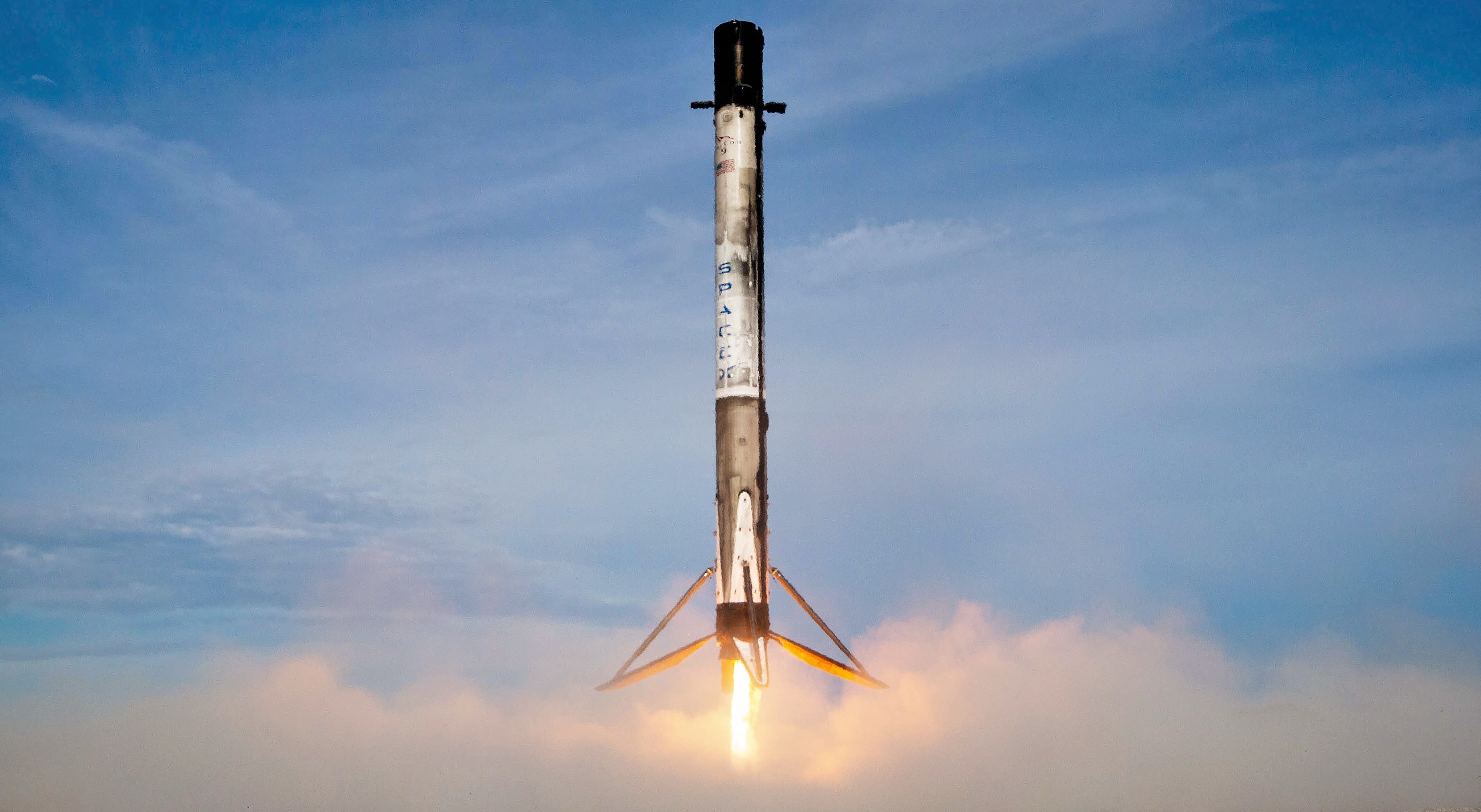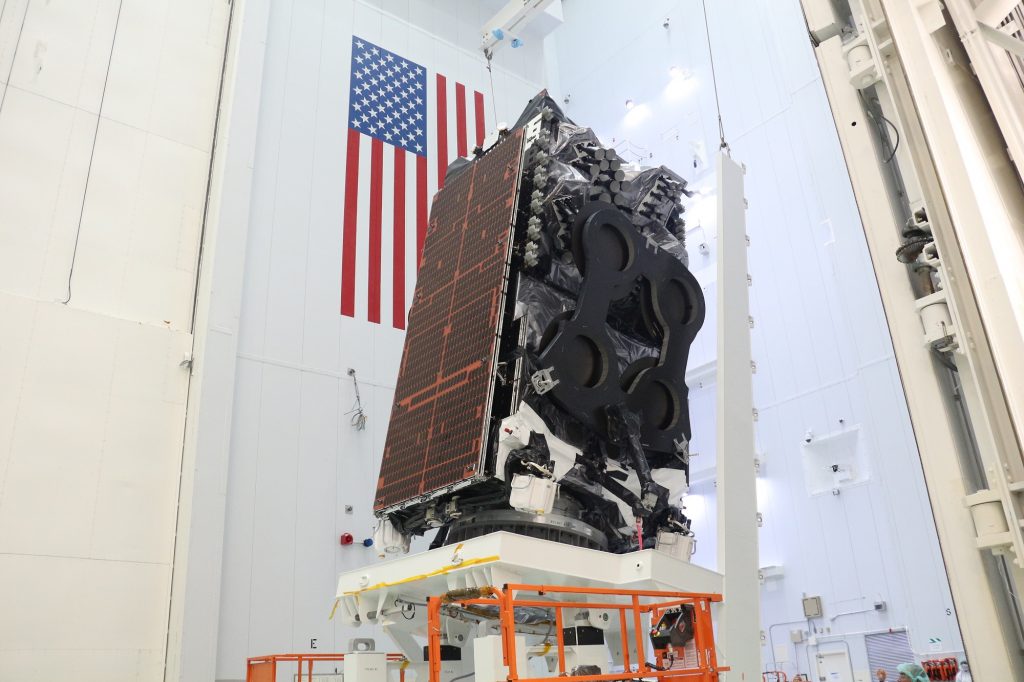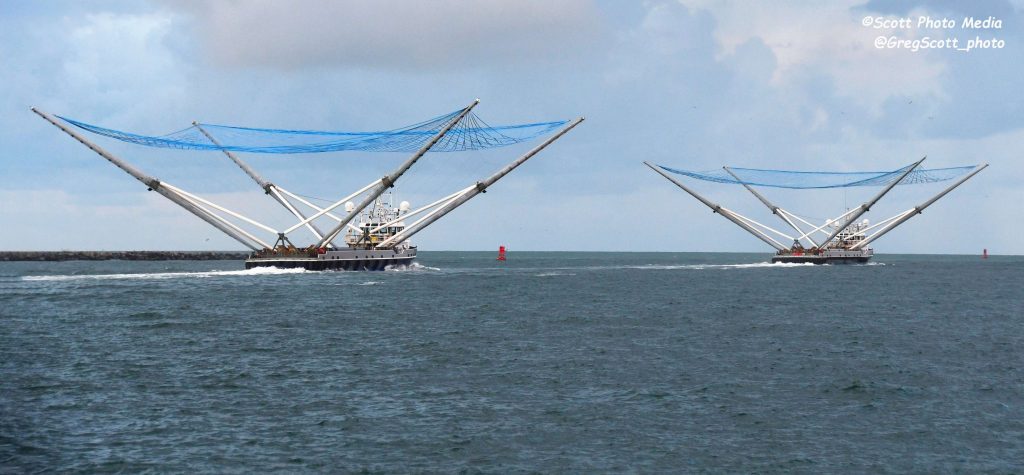

News
SpaceX Falcon 9 fires up ahead of second to last 2019 launch and landing
SpaceX has successfully static fired a Falcon 9’s booster engines ahead of its second to last launch and landing of 2019, on track to make December the company’s busiest month of the year.
About a month after successfully lofting 60 Starlink satellites and 11 days after sending Cargo Dragon on its way to the ISS for CRS-19, SpaceX has two more launch scheduled in 2019: Kacific-1 no earlier than (NET) December 16th and Starlink-2 NET December 30th.

For SpaceX, the turn of the decade will mark the end of an historic year – let alone decade – of milestones for the intrepid commercial space company, including achievements like’s Crew Dragon flawless orbital launch debut, the fourth flight of a refurbished Falcon 9 booster, the first-ever reuse of a flight-proven payload fairing, and a duo of spectacular Starhopper flight tests to name just a few.
First up, SpaceX will fly twice-flown Falcon 9 booster B1056.3 for the third time. B1056.3 previously supported CRS-17 and CRS-18, back to back Cargo Dragon space station resupply missions for NASA. Currently targeting a Monday, December 16th launch, SpaceX is set to place the jointly-owned JCSAT-18/Kacific-1 broadband communication satellite for Japan’s Sky Perfect JSAT Corp. and Singapore’s self-proclaimed “next-generation broadband satellite operator”, Kacific Broadband Satellites.
According to a Kacific, after deploying from Falcon 9 and circularizing into a geostationary orbit some 22,000 miles (36,000km) over the Asia-Pacific region, the JCSAT-18/Kaficic-1 satellite “will stream broadband to 25 nations in South East Asia and the Pacific Islands via 56 spot beams.” All told, the satellite will offer a maximum bandwidth of 70 gigabits per second (Gbps) with each spot beam serving up to 1.25 Gbps.
Kacific was founded in 2013 by CEO Christian Patouraux to provide desperately needed communication services to the Asia Pacific region, “where high prices and unsuitable technology were prohibiting access.” Kacific looks to “provide high speed, affordable and accessible internet to extra-urban, rural, and remote users” with Kacific-1, the company’s first (partially) dedicated satellite.
Ahead of Monday’s launch attempt, the JCSAT-18/Kacific-1 satellite was fully encapsulated inside Falcon 9’s payload fairing, both halves of which SpaceX will try to catch with recovery vessels GO Ms. Tree and GO Ms. Chief in what will be the company’s first simultaneous catch attempt ever. Meanwhile, B1056 has its own recovery attempt penciled in and drone ship Of Course I Still Love You (OCISLY) departed Port Canaveral on December 12th, headed ~650 km (400 mi) downrange. OCISLY arrived at its recovery zone earlier today, as did Ms. Tree and Ms. Chief, now stationed about 140 km (90 mi) further East.
As per usual, Falcon 9 B1056.3 and its expendable upper stage performed a wet dress rehearsal (WDR) and static fire, identical to launch operations minus the rocket actually lifting off. The Kacific-1 mission’s December 16th launch trajectory allows for an 88-minute window from 7:10 pm – 8:38 pm EST (0010-0138 UTC, December 17) and weather forecasts are currently 90% go.
As mentioned, twin fairing recovery vessels GO Ms. Tree and GO Ms. Chief departed Port Canaveral on December 13th in a bid to attempt their first simultaneous Falcon fairing recovery, meaning that each ship will attempt to catch one parasailing fairing half. This mission is technically the second time both ships have port left together for a recovery, but their first whole-airing catch attempt was called off before it could start due to rough seas and high winds in the Atlantic Ocean. Prior to being rechristened Ms. Tree, Mr. Steven suffered severe damage during a planned February 2019 catch attempt, losing its net and two of four arms after the ship was caught in high seas.

Following Kacific-1, SpaceX’s final launch of 2019 – barring delays – will likely be the company’s second dedicated Starlink v1.0 mission, a 60-satellite payload that will almost certainly make SpaceX the world’s largest commercial satellite operator. Starlink-2 is scheduled to launch NET December 30th.
SpaceX will stream Falcon 9’s Kacific-1 launch and landing and the webcast will kick off some 15 minutes before liftoff, NET 6:55 pm ET (23:55 UTC), December 16th.
Check out Teslarati’s newsletters for prompt updates, on-the-ground perspectives, and unique glimpses of SpaceX’s rocket launch and recovery processes.
Elon Musk
Why Tesla’s Q3 could be one of its biggest quarters in history
Tesla could stand to benefit from the removal of the $7,500 EV tax credit at the end of Q3.

Tesla has gotten off to a slow start in 2025, as the first half of the year has not been one to remember from a delivery perspective.
However, Q3 could end up being one of the best the company has had in history, with the United States potentially being a major contributor to what might reverse a slow start to the year.
Earlier today, the United States’ House of Representatives officially passed President Trump’s “Big Beautiful Bill,” after it made its way through the Senate earlier this week. The bill will head to President Trump, as he looks to sign it before his July 4 deadline.
The Bill will effectively bring closure to the $7,500 EV tax credit, which will end on September 30, 2025. This means, over the next three months in the United States, those who are looking to buy an EV will have their last chance to take advantage of the credit. EVs will then be, for most people, $7,500 more expensive, in essence.
The tax credit is available to any single filer who makes under $150,000 per year, $225,000 a year to a head of household, and $300,000 to couples filing jointly.
Ending the tax credit was expected with the Trump administration, as his policies have leaned significantly toward reliance on fossil fuels, ending what he calls an “EV mandate.” He has used this phrase several times in disagreements with Tesla CEO Elon Musk.
Nevertheless, those who have been on the fence about buying a Tesla, or any EV, for that matter, will have some decisions to make in the next three months. While all companies will stand to benefit from this time crunch, Tesla could be the true winner because of its sheer volume.
If things are done correctly, meaning if Tesla can also offer incentives like 0% APR, special pricing on leasing or financing, or other advantages (like free Red, White, and Blue for a short period of time in celebration of Independence Day), it could see some real volume in sales this quarter.
You can now buy a Tesla in Red, White, and Blue for free until July 14 https://t.co/iAwhaRFOH0
— TESLARATI (@Teslarati) July 3, 2025
Tesla is just a shade under 721,000 deliveries for the year, so it’s on pace for roughly 1.4 million for 2025. This would be a decrease from the 1.8 million cars it delivered in each of the last two years. Traditionally, the second half of the year has produced Tesla’s strongest quarters. Its top three quarters in terms of deliveries are Q4 2024 with 495,570 vehicles, Q4 2023 with 484,507 vehicles, and Q3 2024 with 462,890 vehicles.
Elon Musk
Tesla Full Self-Driving testing continues European expansion: here’s where
Tesla has launched Full Self-Driving testing in a fifth European country ahead of its launch.

Tesla Full Self-Driving is being tested in several countries across Europe as the company prepares to launch its driver assistance suite on the continent.
The company is still working through the regulatory hurdles with the European Union. They are plentiful and difficult to navigate, but Tesla is still making progress as its testing of FSD continues to expand.
Today, it officially began testing in a new country, as more regions open their doors to Tesla. Many owners and potential customers in Europe are awaiting its launch.
On Thursday, Tesla officially confirmed that Full Self-Driving testing is underway in Spain, as the company shared an extensive video of a trip through the streets of Madrid:
Como pez en el agua …
FSD Supervised testing in Madrid, Spain
Pending regulatory approval pic.twitter.com/txTgoWseuA
— Tesla Europe & Middle East (@teslaeurope) July 3, 2025
The launch of Full Self-Driving testing in Spain marks the fifth country in which Tesla has started assessing the suite’s performance in the European market.
Across the past several months, Tesla has been expanding the scope of countries where Full Self-Driving is being tested. It has already made it to Italy, France, the Netherlands, and Germany previously.
Tesla has already filed applications to have Full Self-Driving (Supervised) launched across the European Union, but CEO Elon Musk has indicated that this particular step has been the delay in the official launch of the suite thus far.
In mid-June, Musk revealed the frustrations Tesla has felt during its efforts to launch its Full Self-Driving (Supervised) suite in Europe, stating that the holdup can be attributed to authorities in various countries, as well as the EU as a whole:
Tesla Full Self-Driving’s European launch frustrations revealed by Elon Musk
“Waiting for Dutch authorities and then the EU to approve. Very frustrating and hurts the safety of people in Europe, as driving with advanced Autopilot on results in four times fewer injuries! Please ask your governing authorities to accelerate making Tesla safer in Europe.”
Waiting for Dutch authorities and then the EU to approve.
Very frustrating and hurts the safety of people in Europe, as driving with advanced Autopilot on results in four times fewer injuries!
Please ask your governing authorities to accelerate making Tesla safer in Europe. https://t.co/QIYCXhhaQp
— Elon Musk (@elonmusk) June 11, 2025
Tesla said last year that it planned to launch Full Self-Driving in Europe in 2025.
Elon Musk
xAI’s Memphis data center receives air permit despite community criticism
xAI welcomed the development in a post on its official xAI Memphis account on X.

Elon Musk’s artificial intelligence startup xAI has secured an air permit from Memphis health officials for its data center project, despite critics’ opposition and pending legal action. The Shelby County Health Department approved the permit this week, allowing xAI to operate 15 mobile gas turbines at its facility.
Air permit granted
The air permit comes after months of protests from Memphis residents and environmental justice advocates, who alleged that xAI violated the Clean Air Act by operating gas turbines without prior approval, as per a report from WIRED.
The Southern Environmental Law Center (SELC) and the NAACP has claimed that xAI installed dozens of gas turbines at its new data campus without acquiring the mandatory Prevention of Significant Deterioration (PSD) permit required for large-scale emission sources.
Local officials previously stated the turbines were considered “temporary” and thus not subject to stricter permitting. xAI applied for an air permit in January 2025, and in June, Memphis Mayor Paul Young acknowledged that the company was operating 21 turbines. SELC, however, has claimed that aerial footage shows the number may be as high as 35.
Critics are not giving up
Civil rights groups have stated that they intend to move forward with legal action. “xAI’s decision to install and operate dozens of polluting gas turbines without any permits or public oversight is a clear violation of the Clean Air Act,” said Patrick Anderson, senior attorney at SELC.
“Over the last year, these turbines have pumped out pollution that threatens the health of Memphis families. This notice paves the way for a lawsuit that can hold xAI accountable for its unlawful refusal to get permits for its gas turbines,” he added.
Sharon Wilson, a certified optical gas imaging thermographer, also described the emissions cloud in Memphis as notable. “I expected to see the typical power plant type of pollution that I see. What I saw was way worse than what I expected,” she said.
-

 Elon Musk3 days ago
Elon Musk3 days agoTesla investors will be shocked by Jim Cramer’s latest assessment
-

 News1 week ago
News1 week agoTesla Robotaxi’s biggest challenge seems to be this one thing
-

 News2 weeks ago
News2 weeks agoTexas lawmakers urge Tesla to delay Austin robotaxi launch to September
-

 Elon Musk2 weeks ago
Elon Musk2 weeks agoFirst Look at Tesla’s Robotaxi App: features, design, and more
-

 Elon Musk2 weeks ago
Elon Musk2 weeks agoxAI’s Grok 3 partners with Oracle Cloud for corporate AI innovation
-

 News2 weeks ago
News2 weeks agoWatch Tesla’s first driverless public Robotaxi rides in Texas
-

 News2 weeks ago
News2 weeks agoSpaceX and Elon Musk share insights on Starship Ship 36’s RUD
-

 News2 weeks ago
News2 weeks agoTesla has started rolling out initial round of Robotaxi invites


















